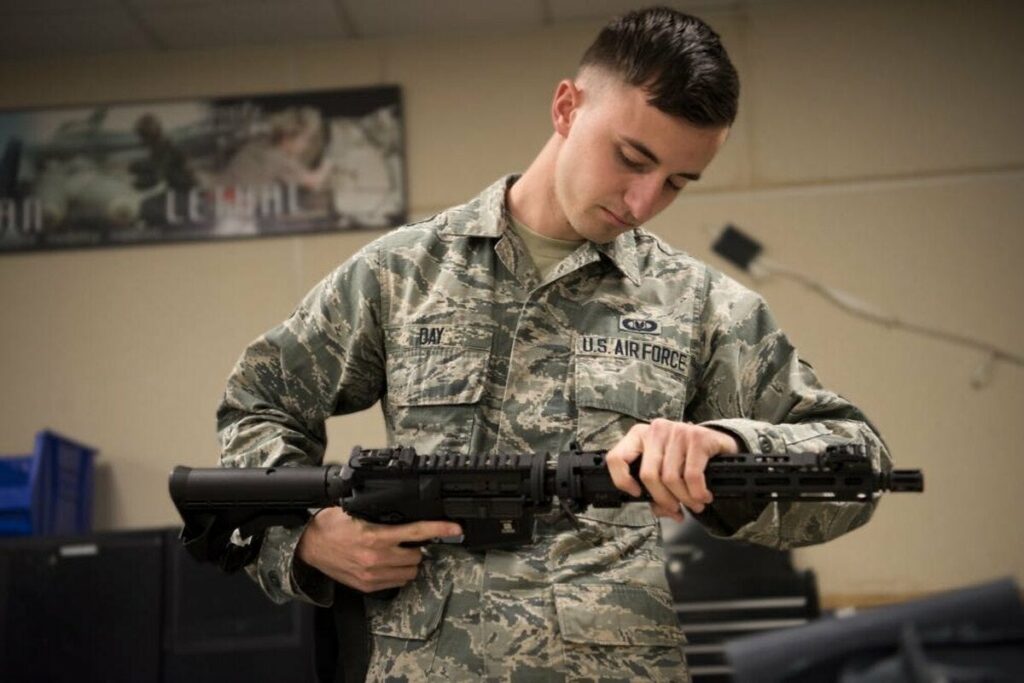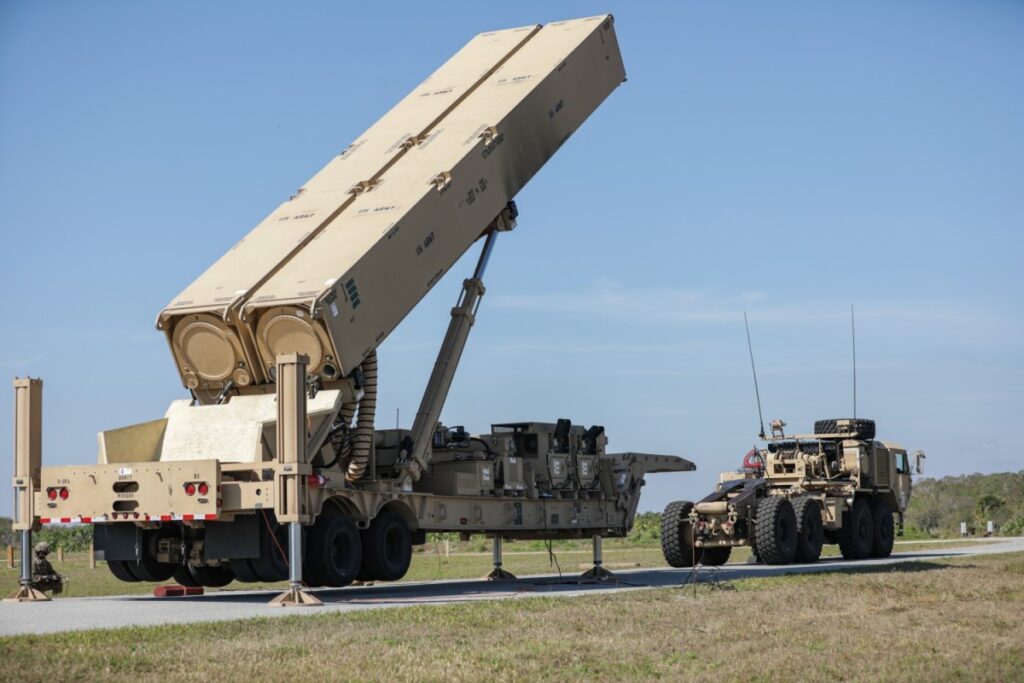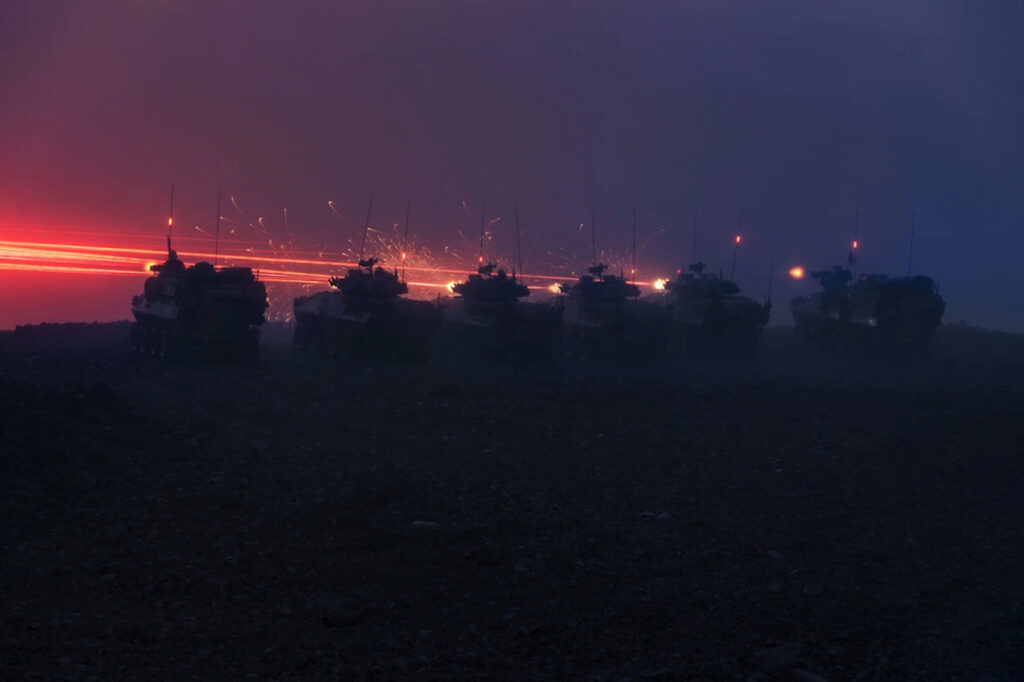I’m not a huge aircraft nerd, but I am a small arms nerd, so when the Air Force unveiled a new rifle, I took notice. The Air Force isn’t much known for its rifle work, but the Air Force Gunsmith Shop came up with the GAU-5A, and it’s a weapon worth discussing as this Aircrew Self-Defense Weapon aims to be the weapon of choice for pilots faced with ejecting over hostile areas.
Room is always limited in the cockpit, so the traditional weapon for evacuating pilots has been a handgun. Well, handguns suck for fighting, at least when compared to a rifle. How exactly do we take a rifle and make it small enough to fit it into the ejection seat kit of an aircraft? That’s the challenge the Air Force Custom Gun Shop faced, and it solved it brilliantly.

The weapon needed to be small enough to fit under the ejection seat, but it also needed to be lightweight and hit a man-sized target within 200 meters. Downed pilots are still combatants and need a combat-capable rifle. Something like the M6 Survival rifle just won’t do.
This creates a challenge, but not an impossible one. Looking over the specs and features of the GAU-5A shows that the Air Force Custom Gun Shop met its goal in style.
Into the GAU-5A
The Army and Marine corps use M as a prefix for firearms, the Navy uses Mk, and the Air Force uses either GUU or GAU which stands for Gun Aircraft Unit. The latest GAU-5A is most certainly an Air Force creation and is unique to the branch.
Let’s start from front to rear. First, the gun’s rear is based on the Stoner design that became the M16, then the M4, and now the GAU-5A. The Air Force retained the use of the 5.56 caliber round and platform. This decreases training time, simplifies logistics, and ultimately ensures the weapon could be small enough to fit in the ejection seat kit.
Related: A critical look at the Marine Corps Annual Rifle Qualification (ARQ)
The barrel
While the M16 uses a 20-inch barrel and the M4 a 14.5-inch barrel, the Air Force went slightly shorter with a 12.5-inch barrel. The longer the barrel, the more velocity and lethal range you ultimately get, but it’s also tough to stuff a 20-inch barrel under a seat. A 12.5-inch barrel is a great compromise.
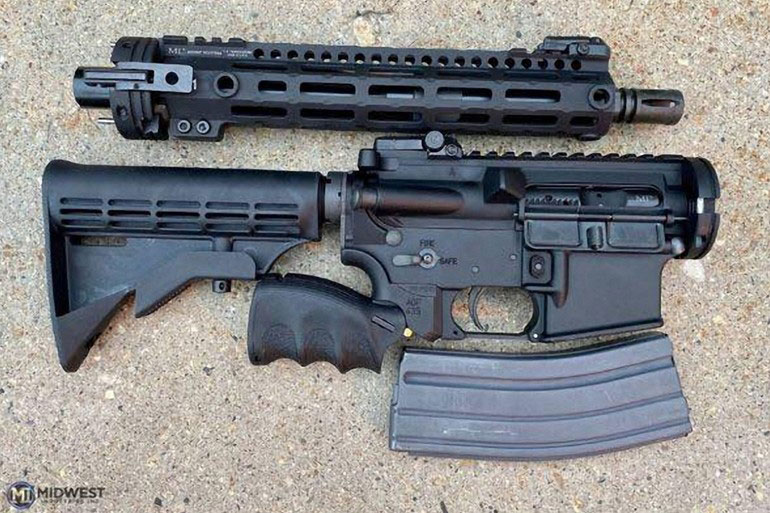
The 12.5-inch barrel is short and sweet but capable. It helps ensure the weapon remains lightweight and easily maneuverable. The barrel still allows the use of a carbine-length gas system to ensure total reliability. (Anything shorter uses a pistol-length gas system.)
The velocity with issued projectiles still tops 2,600 FPS, which does allow for fragmentation on a soft target. This barrel also makes hits at 200 meters lethal and feasible. The GAU-5A wears iron sights only, so a competent marksman won’t have issues making hits at 200 meters on a man-sized target.
Break it down
To make sure the whole getup fits, the barrel can be quickly detached from the gun. The Air Force uses a quick-release barrel system from a company known as Cry Havoc Tactical. This system is fairly simple and easy to use. It uses a special gas tube and gas tube extension to allow the barrel to disconnect at the point where the barrel meets the upper receiver.
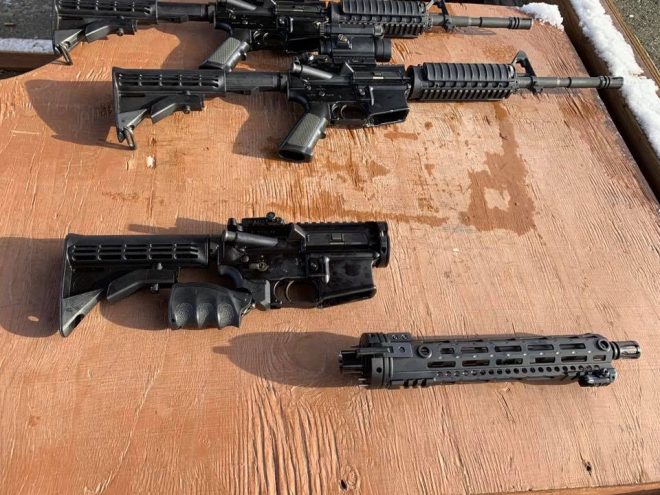
There is no need to align a tiny gas tube, so the installation can be done quickly and even in the dark with a single hand if need be, which is important for the situations a downed pilot might find themselves in. One concern would be a shift in point of aim/point of impact due to the barrel attaching and detaching. However, Cry Havoc Tactical’s QRB setup still headspaces off of standard position, so accuracy isn’t an issue.
COTS, COTS as far as the eye can see
Around the barrel and quick-release system sits a lightweight M-LOK handguard. A company called Midwest Industries produced the rail creating an extremely lightweight handguard. It’s simple but capable. While the pilot ejecting isn’t looking to mount accessories, the M-LOK slots allow it if need be. They also ensure the rifle remains quite light and provides a base to mount the front iron sight.
The pistol grip comes from Israeli company FAB Defense. It folds rearward and makes the package a bit more compact without sacrificing the grip a shooter has on the gun. It’s a simple addition that helps the GAU-5A squeeze in under that seat. The stock is just a standard M4 collapsible design.

Across the top sits a set of folding sights. The M4 uses a front sight gas block with the classic A-Frame front sight. That’s a tough and durable option, but it’s fairly bulky. Instead, the gun wears Magpul MBUS Pro sights. These are folding metal sights that are easily adjustable and provide a very robust but compact sighting option.
The rail, breakdown system, grip, and sights are all COTS (Commercial Off-the-Shelf) products. COTS products make it easy to customize the GAU-5A into the niche weapon that it is. It’s rare to see the adoption of this many specialty parts, but it makes sense for such a special weapon. Nothing in the military system could produce this weapon.
Short, sweet, and ready
The GAU-5A weighs only seven pounds loaded and is 29 inches long with the stock fully collapsed. It fits into a 16x14x3.5 inch compartment with four 30-round magazines when broken downs. That’s a lot of firepower in a small package. It’s an impressive rifle, and the Air Force Custom Gun Shop should be proud.
Feature Image: An airman inspects his GAU-5A rifle. (Air Force)
